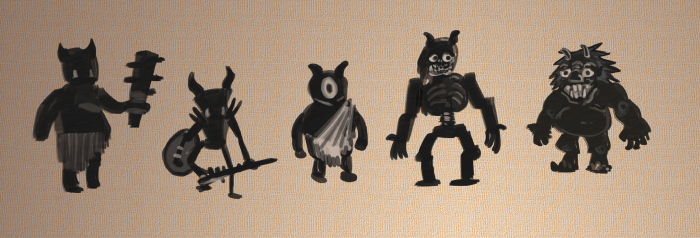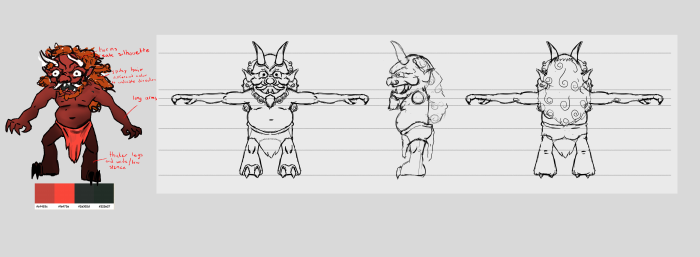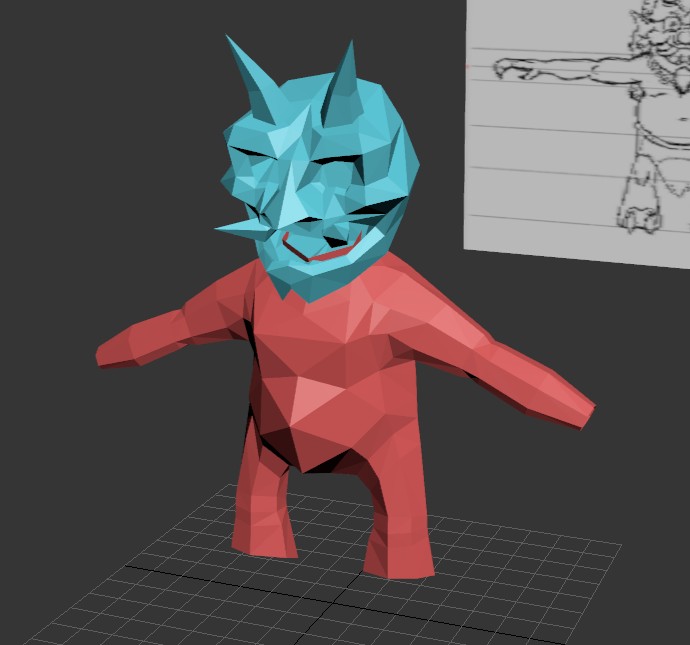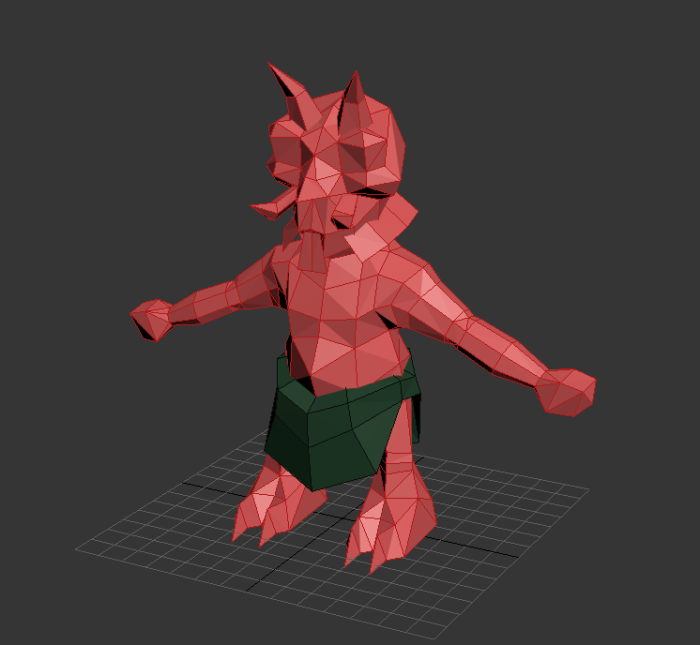Hello!
My name is Peo Johansson, and I am a graphical artist and the lead sound designer on the team Ninja Slice, developing the game concept The Summoning.
So, what kind of game is The Summoning? Well, it’s a top-down perspective 3D game, that is centered around the concept of asymmetrical multiplayer. In order words, people compete against each other, but their goals and what they do are different.
One player plays the game similarly to an action adventure or hack-and-slash game, controlling one character fighting multiple enemies.
The other player plays The Summoning like a real time strategy game, controlling the above mentioned enemies like an army.
The Summoning takes place in a world inspired by Asian mythology, particularly Japanese Shintoism. The game also has an ink-and-paper visual aesthetic, inspired by classic Japanese arts.
Now that the introduction’s over, I’ll go over an artifact I’ve worked on during the early stages of the production process. Namely, one of the minion types controlled by the real time strategy side player.
The first thing I did was to research various Asian mythological creatures. The real time strategy side player plays the role of a Japanese demon, a so called Oni. As such, all the minions are supposed to be monsters as well.
Doing the proper research before starting to conceptualize was important, as the aesthetic of the game is focused on a culture none of us in the team has much experience with.

After I had done my research, I started on conceptualizing the character. Even at this point, it was hard to let go of a western mindset when it came to the design and it took several iterations for it to feel right. Not only was it important for the design to fit with our theme, the silhouette of the character also had to be easily readable at a glance. This is because the high camera angle in the game doesn’t allow for a closer look at the character models.
Once I and the rest of the team had agreed upon a design, I produced a turnaround image. A turnaround shows a character from multiple angles, and is absolutely vital when working in 3D.

The turnaround proved difficult to draw for me, as it required the character to be anatomically consistent between the different angles, and all the details had to line up. This was one of my first experiences in drawing a turnaround image.
After this, I started working on the 3D model. I started with blocking out the shape of the torso, matching the silhouette up with the front and side views on the turnaround image. After the torso was mostly finished, I went on to work on the head, as well as the arms and legs.

Unfortunately, at this stage I realized that I had underestimated the amount of triangles that my level of detail took up. Our team’s internal triangle count limit for minions is 800. The reason for this is that triangles take up processing power, and as there are going to be a large number of these characters on the screen at the same time, we want to minimize the load on the computer.
At this point, I had to remove unnecessary details from the character models, prioritizing those that break the silhouette as those are the ones that stands out at a distance.

Eventually I was able to find an acceptable balance between detail and staying within the triangle budget. The finished result is what you see in the picture above.
There is still much work to be done on this character model before it is finished, but for now this is where I will wrap up this update.
One thought on “The Summoning – Blog Post 1”